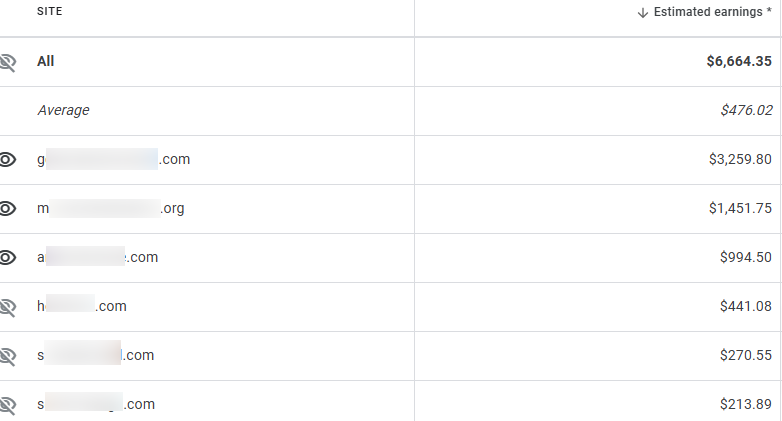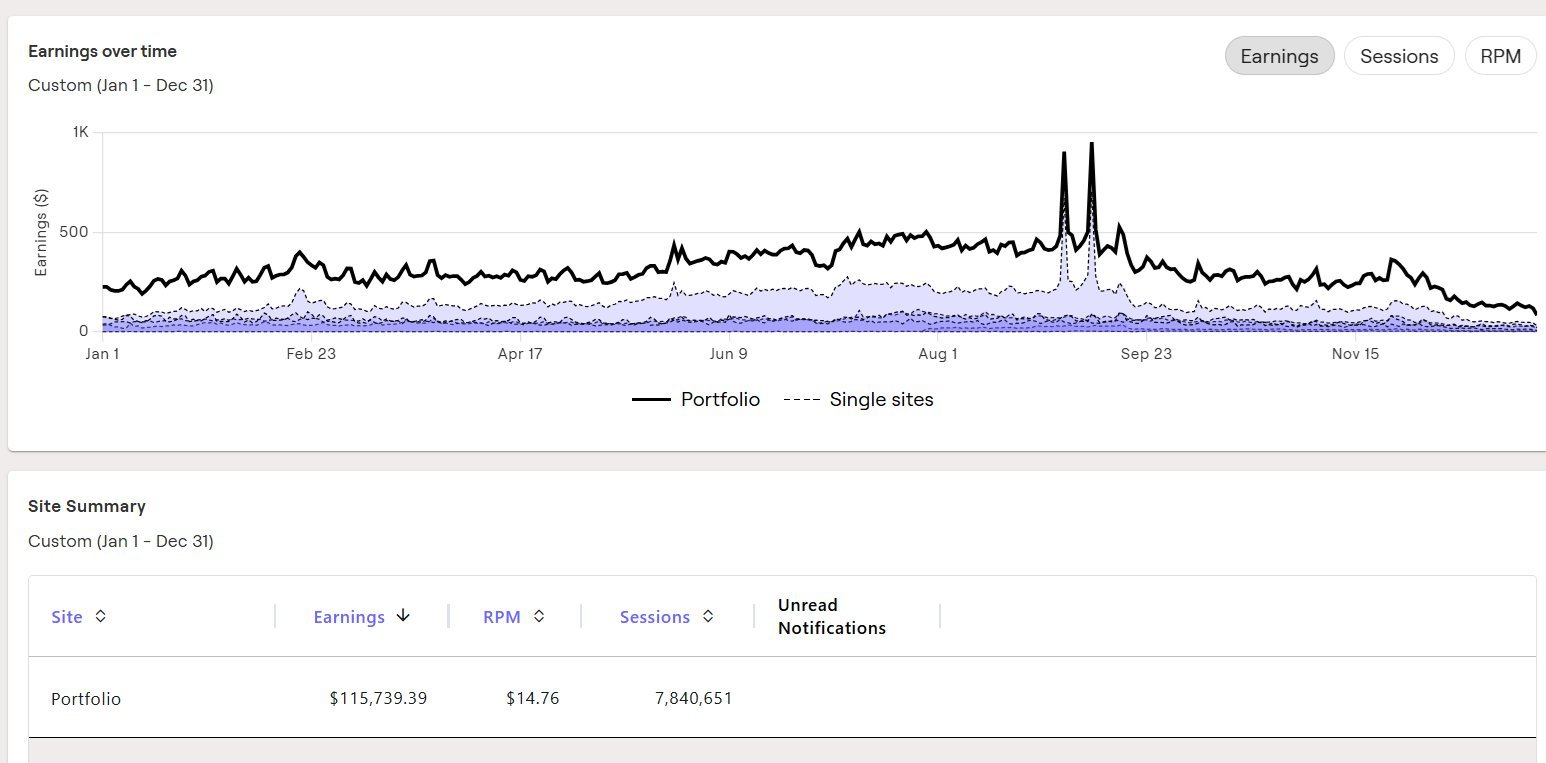So, you’ve started your blog or planning to launch one, and now you’re looking for ways to monetize it. Or maybe you’re just curious about how blogs make money.
Whatever the case may be, this guide will walk you through the most popular and efficient methods to monetize a blog.
These are the very strategies we used to generate over $500,000 in just 2–3 years of blogging.
Well, if you haven’t started your blog, you would like to check out our guide on How to start a blog.
In case you have already launched your blog, don’t miss out how to make your first $100 with Pinterest.
While there are dozens of ways to earn money from a blog, we’ll focus on the most effective, straightforward, and widely used methods:
- Placing Ads
- Affiliate Marketing
- Sponsored Reviews
- Offering Your Services
- Selling an eBook/Digital Products
So, let’s get started with each of the above methods in detail.
Beginner’s Guide to Monetizing Your Blog in 2025
1. Placing Ads
One of the simplest, easiest, and most effective ways to make a good amount of money is by placing ads on your blog.
Placing ads on your blog means selling some space on your website to display advertisements and getting paid in return.
For beginners, Google AdSense is one of the best ad networks that pays decent money for placing ads on your blog.
Here are some of our small site making us some extra income yearly with Google AdSense Ads:

To place Google AdSense ads on your blog, you need to apply for the program. Google manually reviews your blog and then decides whether to approve or disapprove your application.
There are any as such requirements to apply, but you need to follow some Google AdSense guidelines in order to apply.
Once your application is approved, you simply need to add some code to your website, and you’re good to go.
However, the amount of money you make from ads largely depends on the audience your blog attracts.
The demographics of your audience and the niche of your blog play a significant role.
For example, 1,000 views from the U.S. can earn you 10 times, or even more, than 1,000 views from an Asian country.
Similarly, blogs focused on niches like finance, travel, and digital marketing tend to generate much higher ad revenue compared to generic blogs with content such as entertainment.
While Google AdSense is a good option for beginners, it’s not the best.
The industry-leading ad networks are Raptive (formerly known as AdThrive) and Mediavine.
These networks provide RPMs (revenue per thousand impressions or views) that are significantly higher than Google AdSense.
However, getting approved by these networks isn’t easy.
- Raptive requires your site to have at least 100,000 monthly pageviews, with more than 50% of your audience from Tier 1 countries.
- Mediavine has slightly lower requirements, with about 50,000 monthly sessions needed for approval.
We use Raptive on most of our websites and consistently generate over $100,000 annually just by placing ads on these sites.

Getting traffic of over 50,000 pageviews monthly can take several months to years, so getting approved by Mediavine or Raptive is a long-term goal for beginners.
But there’s good news for you!
Mediavine has launched a new ad network called Journey by Mediavine for sites with lower traffic requirements.
Journey only requires 10,000 monthly pageviews, making it easier for bloggers to transition from Google AdSense once their site reaches 10,000 monthly visits.
Let’s move on to the next popular method of earning money from a blog: affiliate marketing.
💡 Monetization starts with getting the right eyeballs on your content, and Pinterest has been my most reliable free traffic source even during major Google updates.
I help bloggers grow their Pinterest presence with services like account audits, custom pin design, and full management – all tailored to turn your content into consistent traffic.
2. Affiliate Marketing
Affiliate marketing is promoting a product and earning a commission when someone buys it using your affiliate link.
An affiliate link is a special tracking link you get when you join an affiliate program for a product.
Types of Commissions:
- One-Time Commission: You earn money once when someone buys a product through your link.
- Recurring Commission: You earn money every time the referred user makes a payment. This creates an automated, repeated source of income.
How to Get Started:
Find Affiliate Programs & Networks: Don’t worry, you don’t need to spend hours searching.
Here are some of the best affiliate marketing programs and networks:
- ShareASale
- ClickBank
- Amazon Associates
- eBay Affiliate Program
- Impact Radius
- CJ Affiliate
- Awin
- Flex Offers
- Semrush
- Grammarly
- BlueHost
- SiteGround
- WP Engine
- GetResponse
- AWeber
Join These Programs: Sign up for the programs that best fit your blog’s niche and audience.
Promote Products: Add affiliate links naturally within your content, such as in product reviews, tutorials, or resource lists.
Earn Commissions: When your readers purchase through your affiliate links, you earn a commission.
3. Sponsored Reviews
Sponsored Reviews are a quick way to monetize your blog.
A sponsored review involves reviewing a product or service on your blog and getting paid in return.
How to Get Started:
Build a Professional Blog:
- Use a premium theme for a polished look.
- Create a well-designed logo.
- Set up essential pages like Contact, About Me, and Advertise.
Publish Detailed Reviews:
- Write in-depth and honest reviews of products related to your niche.
- Create a dedicated “Review” category on your blog.
Reach Out to Brands:
- Contact brands that offer products you can review.
- Look for brands that other bloggers are reviewing as well.
4. Selling eBooks and digital products
Selling eBooks and digital products is a fantastic way to monetize your blog while providing valuable resources to your readers.
Start by choosing a topic that aligns with your blog’s niche and addresses a specific need or problem your audience faces.
For example, if you run a fitness blog, consider creating an eBook with workout plans or healthy meal prep guides.
Once you’ve selected your topic, focus on creating high-quality, well-structured content that offers real value.
Tools like Canva can help you design a professional-looking cover, making your eBook more appealing.
Next, set up a sales platform to sell your digital products directly from your blog.
Platforms such as Gumroad, SendOwl, or WooCommerce integrate seamlessly with your website, allowing you to manage sales and deliveries effortlessly.
Promote your eBooks and digital products through dedicated blog posts, social media channels, and your email newsletter.
Offering free samples or previews can entice your audience to make a purchase by giving them a taste of the value you provide.
To maximize your sales, ensure that your products are easy to purchase and download.
Provide clear instructions and excellent customer support to enhance the buying experience.
Building digital products can take some time, but when you promote them in the right way and provide value, it can be become a major source of income for you.
5. Offering Your Services
Similarly, like selling digital products, you can sell your services.
So, If you have a specific skill set, you can start offering your services to your blog visitors.
Whether you specialize in consulting, freelance writing, graphic design, or web development, your blog can serve as a powerful platform to showcase and sell these services.
Start by defining the services you offer and creating a dedicated “Service” page on your blog.
Make sure this page clearly outlines what you provide, your pricing, and how potential clients can get in touch with you.
Promote your services through relevant blog posts, social media channels, and your email newsletter to reach a broader audience.
You can also list your services on freelance platforms like Fiverr or Upwork to attract more clients.
To build credibility, showcase your skills by sharing case studies, testimonials, and examples of your past work.
Offering packages or bundled services can make your offerings more appealing and accessible to a wider range of clients.
SEE ALSO:
- How to make your First $100 on new Pinterest Account
- 15 Beginner Pinterest Mistakes you can’t Afford to Make
- Mastering Pinterest Keyword Research: A Beginner’s Guide to Driving Traffic
Final Words
Monetizing a blog is an exciting journey that requires patience, effort, and consistency. Whether you’re just starting out or looking to expand your revenue streams, there’s a strategy for every stage of your blogging journey.
From placing ads and leveraging affiliate marketing to creating digital products, offering services, and securing sponsored reviews, the possibilities are endless.
If you’re new to blogging, focus on building a strong foundation and setting realistic goals. Start small with strategies like Google AdSense or affiliate marketing, and gradually explore advanced methods like selling eBooks or offering premium services.
Remember, success doesn’t happen overnight, but with consistent effort and smart planning, it’s achievable.
Finally, don’t be afraid to experiment with different monetization methods and adapt based on what works best for your blog and audience.
Blogging is not just about earning money, but also about delivering value to your readers.
So, take action, stay consistent, and enjoy the process of turning your blog into a profitable venture. Here’s to a successful blogging journey this year and beyond! 🚀
Note: Some of the links on this page are affiliate links, which means we may earn a small commission if you choose to make a purchase through them-at no extra cost to you. We only recommend products and services we genuinely believe in and find useful.

